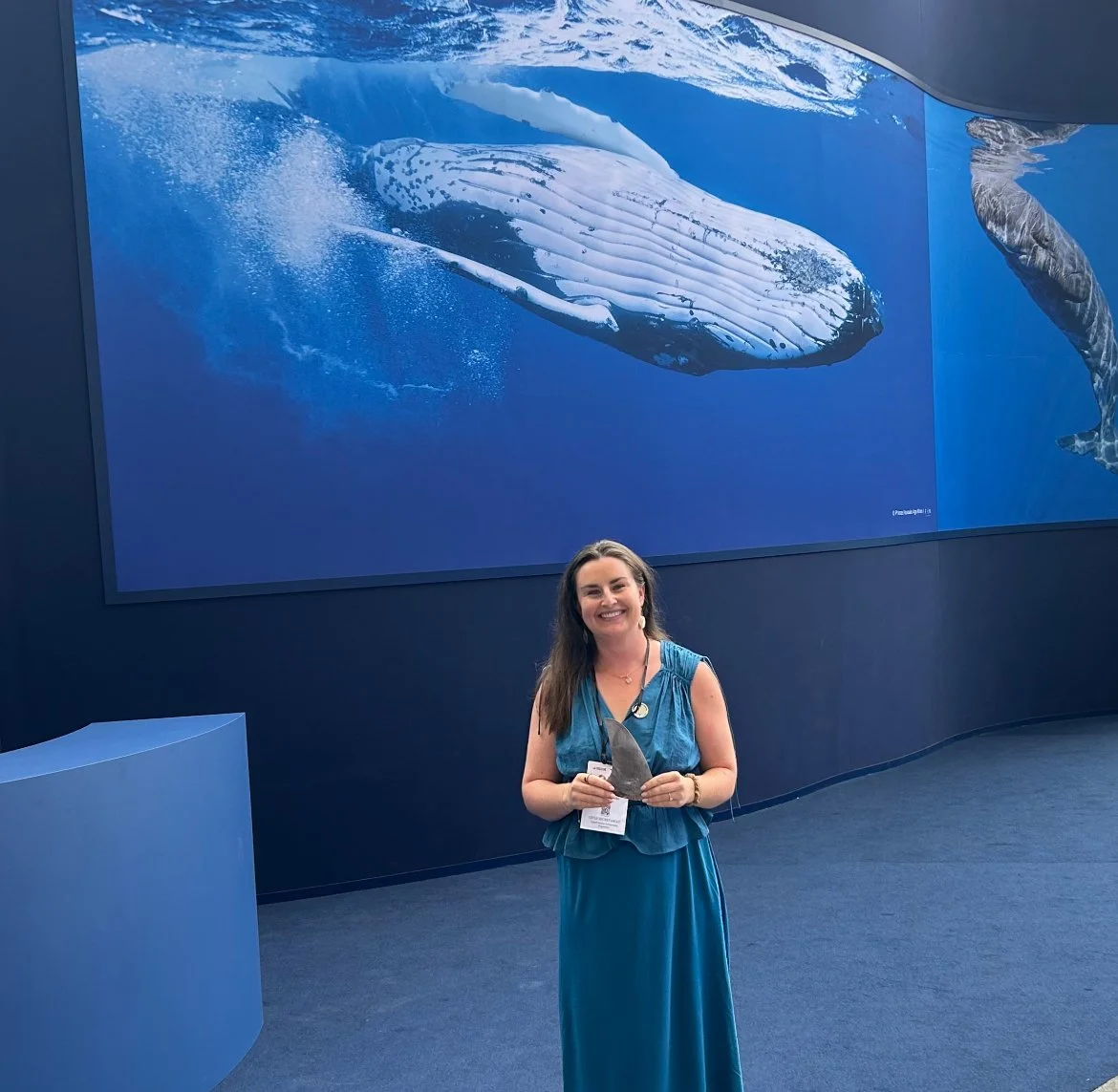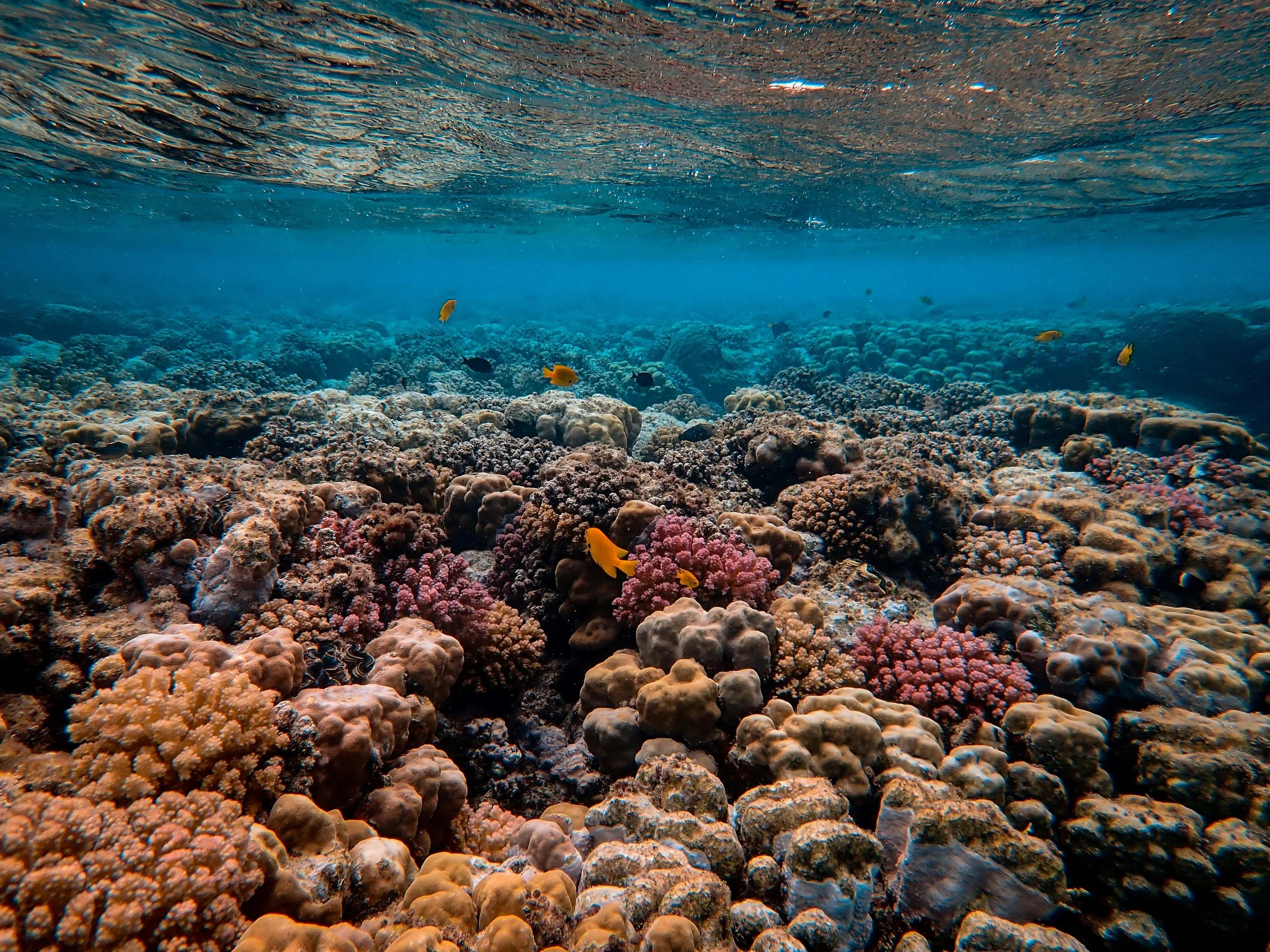Big waves at UNOC3: What really happened at the United Nations Ocean Conference?
I went to the third UN Ocean Conference (UNOC3) in Nice, France, with a healthy dose of skepticism. Even though I do work for the UN, I often find these big UN summits are full of talk and bold pledges, but not a whole lot of follow through. After all, plenty was promised at the last Ocean Conference, and very little of it has been delivered.
Still, being there reminded me why these conferences matter. They are one of the few spaces where such a diverse group of ocean stakeholders — from Indigenous leaders and scientists to policymakers and activists — can come together, share knowledge, and push for action.
The oceans have never been in such a dire state. We are currently in the fourth global mass bleaching event (bet you didn’t see that on the news!), deep sea trawling is completely decimating marine life (thank you David Attenborough for bringing this to life in your new documentary - everyone needs to go and watch it!), marine species are going extinct before our eyes and countries are doing very little to protect even a fraction of what we need to protect of our oceans.
But this year, there was real momentum. From the the High Seas Treaty which is looking to safeguard the forgotten international waters to new protections for coral reefs and calls to end deep-sea mining, there were some genuine signs of progress.
Let’s dive in!
What exactly is UNOC3?
More than 15,000 delegates — including over 60 heads of state and government leaders — gathered in Nice to assess progress and accelerate implementation of international agreements designed to safeguard marine ecosystems. The conference comes at a time when ocean health is declining rapidly due to climate change, pollution, and overexploitation.
Despite the urgency, the United States sent only observers, continuing its broader shift away from multilateral climate efforts under the leadership of President Donald Trump. The administration’s recent moves to encourage deep-sea resource extraction and roll back Pacific marine protections drew sharp criticism throughout the week.
High Seas Treaty: A Step Closer to Ratification
We are SO close on this one!
One of the most significant developments was the ratification of the UN High Seas Treaty by 19 additional countries, bringing the total to 50 — just 10 short of the 60 needed for the agreement to enter into force. Once ratified by 60 nations, the treaty — adopted in 2022 — will come into effect within 120 days, establishing legally binding mechanisms to protect marine biodiversity in areas beyond national jurisdiction.
The ‘High Seas’ is the open ocean, international waters that belong to no one. They make up 50% of our planet yet have absolutely zero protection by anyone.
“The Treaty’s power lies in the number of countries that join,” said Rebecca Hubbard of the High Seas Alliance, calling on remaining nations to ratify swiftly.
The treaty, aligned with the 1982 UN Convention on the Law of the Sea (UNCLOS), addresses issues such as marine pollution, overfishing, and the creation of marine protected areas in international waters — which cover more than 60% of the world’s oceans.
Marine Protected Areas: Expansion and Innovation
Marine Protected Areas (MPAs) were another key focus, with countries like Chile, Colombia, Tanzania, and French Polynesia announcing new or expanded reserves. French Polynesia’s announcement of a 5 million square kilometer MPA — including 1.1 million square kilometers under strict protection — was hailed as a milestone.
Currently, only 8% of the world’s ocean is under any form of protection, and just 2.8% is considered effectively protected. The 30x30 target — conserving 30% of marine and coastal areas by 2030 — remains far off.
“Protecting 30% of the ocean is the bare minimum,” said Catherine Weller, Global Policy Director at Flora & Fauna. “But quality and effectiveness are critical. This means working with coastal communities and banning destructive practices like bottom trawling.”
A Clearer Stand Against Deep-Sea Mining
Calls for a global moratorium on deep-sea mining echoed across UNOC3, with France leading the charge. President Emmanuel Macron denounced the practice as “madness” and a threat to ocean ecosystems and climate stability.
Four additional countries joined the moratorium effort, bringing the total to 37. Critics, however, say progress is still too slow.
“Fine words won’t stop mining machines,” said Greenpeace’s Megan Randles. “Countries must be brave and stop deep-sea mining now.”
The United States came under particular fire for its pro-mining stance. A new policy directive under President Trump encourages commercial exploitation of the seabed both within and outside U.S. waters — a move Macron rebuked, stating: “The deep sea is not for sale.”
Coral Reefs: Fragile Hope Amid Crisis
Coral reef conservation received a boost with new pledges from 11 countries — including Indonesia, Tanzania, and the Solomon Islands — to prioritize climate-resilient reefs. These ecosystems, which support 25% of marine life and provide services valued at up to $9.9 trillion annually, are facing unprecedented threats.
A fourth global coral bleaching event — the worst on record — is currently affecting more than 83% of the world’s reef areas.
In response, the Global Fund for Coral Reefs received over $25 million in new pledges from governments and philanthropic partners, aiming to support climate-resilient reef systems and sustainable reef-based enterprises.
Global Plastic Treaty: Renewed Momentum
The conference also saw renewed support for a Global Plastic Treaty, with over 95 countries voicing frustration at stalled negotiations and urging a comprehensive agreement covering the full lifecycle of plastics.
“We must reduce production and consumption — not just manage waste,” said French Minister Agnes Pannier-Runacher, as delegates looked ahead to the next round of negotiations in Geneva this August.
With more than 8 million tonnes of plastic entering the oceans each year and virtually indestructible plastics accumulating across marine environments, the need for binding global action is increasingly urgent.
A Turning Tide for Ocean Protection?
I had to get ‘turning tide’ in there…there are so many plays on words you can use for the ocean :)
So, UNOC3 made clear that while political momentum is growing, meaningful ocean protection demands more than pledges. It requires action, enforcement, and global cooperation. As the world races to meet the 2030 targets, the pressure is now on governments to deliver on their promises….
This is where YOU come in. What can you do to keep the momentum going?
Keep the pressure on your governments.
Support organisations fighting for ocean protection.
Advocate for policies that protect ecoystems.
Choose sustainably sourced seafood (or opt out entirely!!)
Reduce plastic to prevent ocean ocean pollution.
Raise awareness about the importance of healthy oceans with you friends and families (many people are still very unaware of this issue!)















